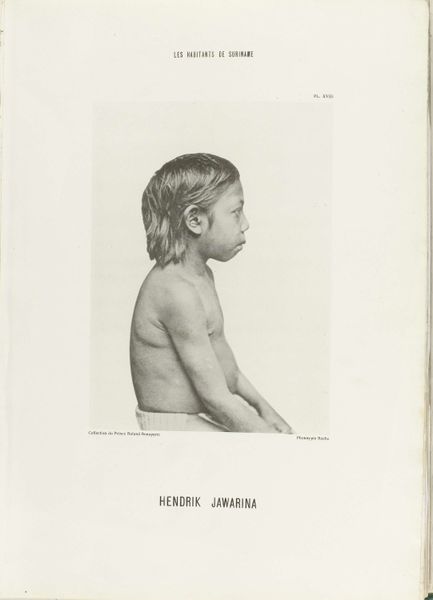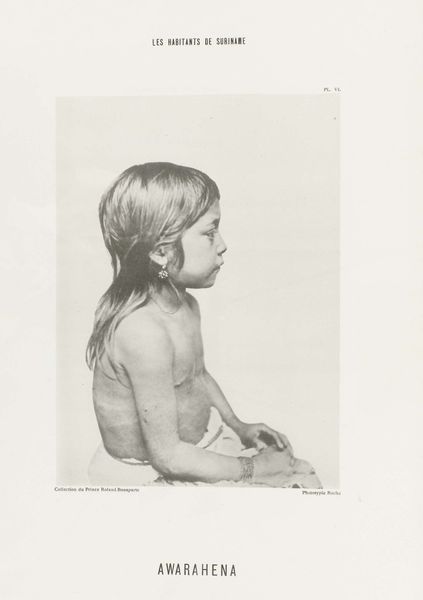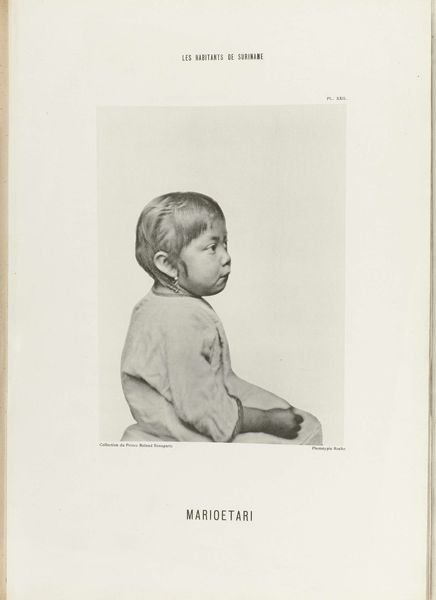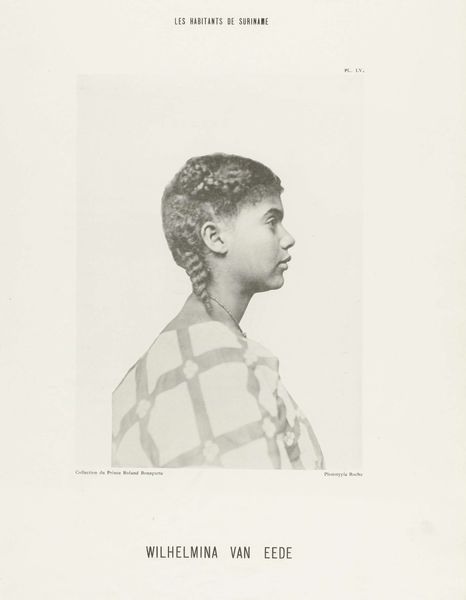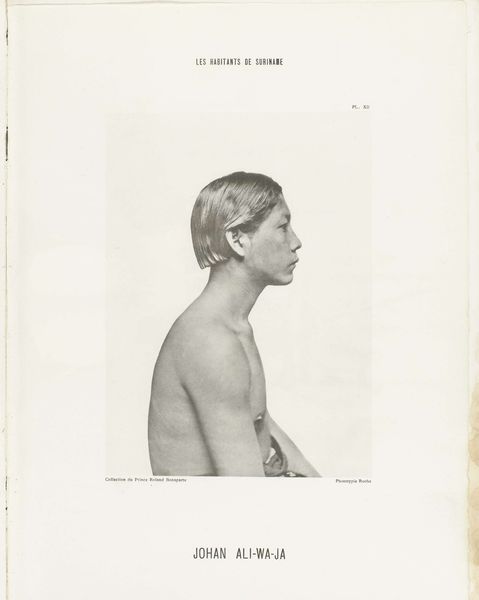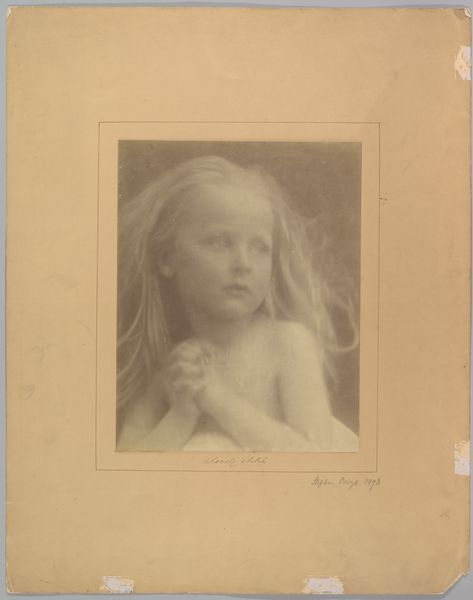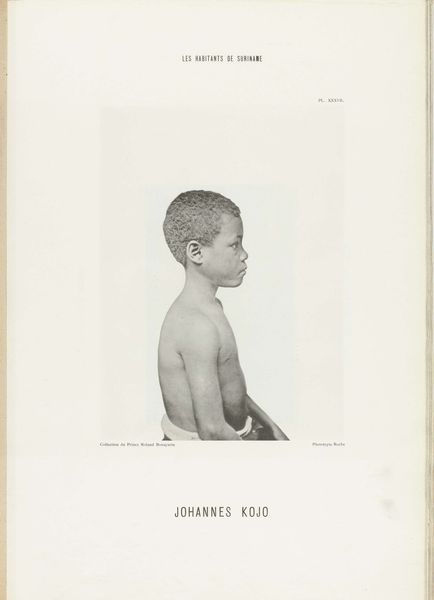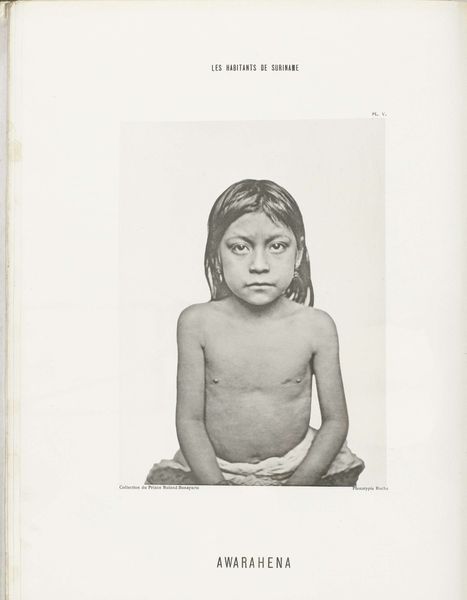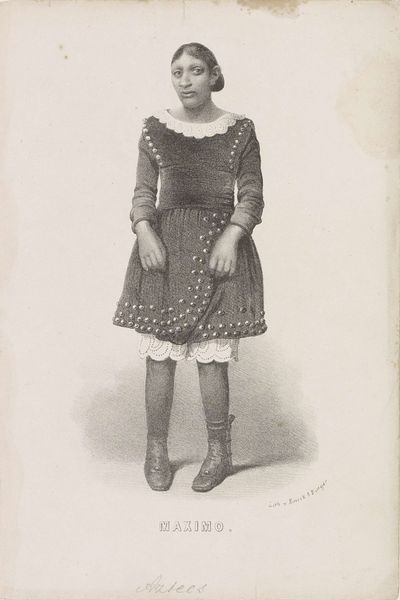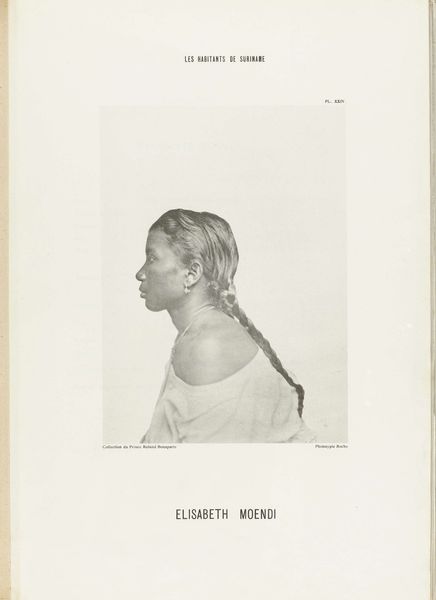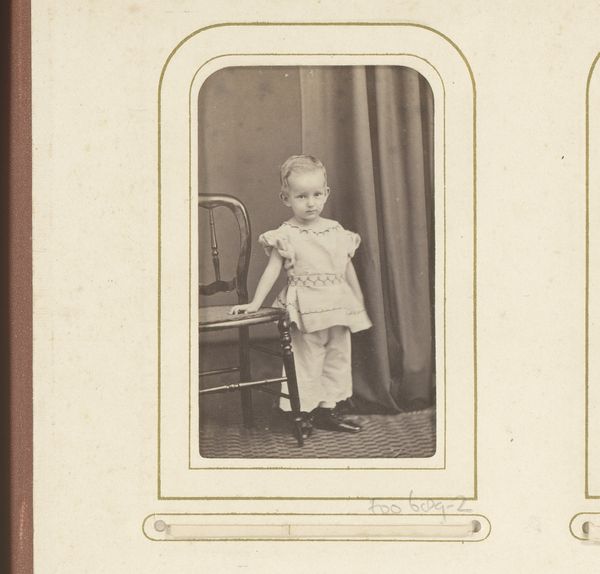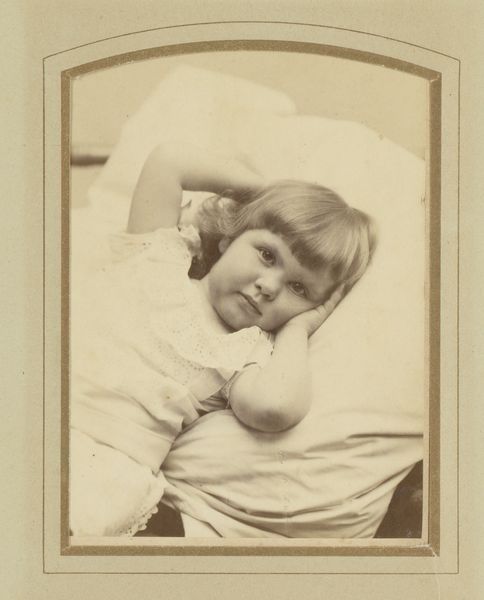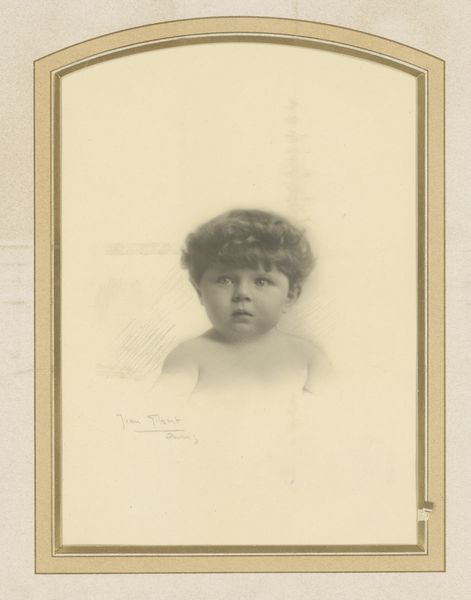
albumen-print, photography, albumen-print
#
albumen-print
#
portrait
#
archive photography
#
photography
#
historical photography
#
albumen-print
Dimensions: height 239 mm, width 174 mm
Copyright: Rijks Museum: Open Domain
Curator: Standing before us is "Portret van Johan Koemayara," a photograph by Friedrich Carel Hisgen, taken between 1883 and 1884. It’s currently held here at the Rijksmuseum. Editor: The grayscale immediately strikes me. It’s austere, almost clinical, yet there's a certain softness to the light that softens the young boy's profile. Curator: This albumen print, a specific photographic process popular at the time, serves as documentation, a kind of racial archive. The subject, Johan Koemayara, a young Indigenous boy from Suriname, is presented almost like a scientific specimen. Editor: The choice of the albumen print matters significantly. Its use would've impacted not only the aesthetic qualities of the photograph but also how it would've been circulated and consumed at the time. Was it intended for scientific research, anthropological study, or something else entirely? Curator: More than likely, this image played a role in constructing the narrative of indigenous peoples. Images like these were circulated to reinforce notions of racial and cultural hierarchies during an era of intense colonialism. Hisgen’s project participated in that problematic tradition. Editor: The making of this photograph involves a complex layering of materials and processes, transforming silver salts on paper into an object imbued with social meaning. But think of the boy, his labor under that gaze, forever printed, frozen in time through chemical process. The photograph captures him as material for European consumption and classification. Curator: Precisely. His posture, turned in profile, against the stark white backdrop robs him of agency. His status, or lack thereof, speaks volumes. We need to be mindful when revisiting images rooted in power imbalances. It compels us to look closely at the historical forces that have shaped his representation and its circulation through a colonial framework. Editor: Seeing it that way really heightens the unease I felt initially. The beautiful gradation feels far from simple – it feels oppressive. It really causes you to interrogate the ethics of the image itself, even across centuries. Curator: It definitely highlights how vital it is to critically examine our visual heritage. Editor: Absolutely. Considering how the material choices intersect with larger structures of power and representation, changes your reading of it completely.
Comments
No comments
Be the first to comment and join the conversation on the ultimate creative platform.
